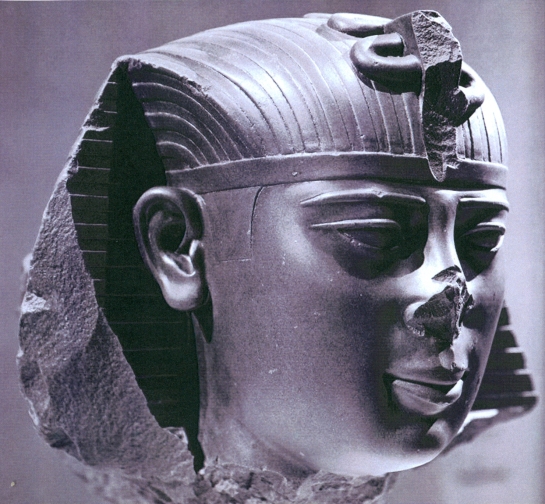JESUS OF NAZARETH AND POLYKRATES OF SAMOS (AHMOSE II, XXVI DYNASTY).
Before you read this online article: please understand I’m not a connoisseur or a high-level guru, I’m just an average guy into alternative research.

JESUS OF NAZARETH AND POLYKRATES OF SAMOS.
Everyone has heard about a miraculous man known as Jesus of Nazareth, ambassador of love-compassion energy. Though Jesus is not historically documentable, the Holy scriptures speak about his amazing deeds and of his transcendentalism. Chapter 17 of the Book of Matthew mentions an incredible event that transpired in Capernaum, by the northern shore of the Sea of Galilee. When Jesus visited the Gennesaret region he was accompanied by his devoted disciple Peter, the collectors of the Temple tax approached Peter asking if his teacher pays the Temple tax. Peter said ‘Yes.’

(Jesus Christ, son of Mary, begotten of the Holy spirit, born in Bethlehem/Judea)
Jesus asked Simon-Peter if the kings of the earth take tolls or census from subjects or foreigners, Peter replied “from foreigners.” Since subjects are not bound by the laws applying to foreigners, neither is Jesus or his disciples who belong to the kingdom of heaven, bound by the duty of paying the Temple tax imposed of those who are not of the kingdom. Jesus said the following words to Peter:
“But that we may not offend them, go to the sea, drop in a hook, and take the first fish that comes up. Open its mouth and you will find a coin worth twice the Temple tax. Give that to them, for me and for you.”
(Matthew 17:27)
Jesus was talking about a Greek Stater coin worth two double drachmas, the Temple tax was a Jewish half-shekel (as mentioned in Exodus 30:13).

(Jesus of Nazareth, friend of the fishermen, Illustration by the French artist Gustav Dore)
The magical-Biblical story of the fish with the coin in its mouth finds an echo in the tale of a ruler known as Polykrates of Samos, son of Aiakes (535-522 B.C.). Polykrates was a despot that lived in the days of pharaoh Ahmose II, successor of Apries (XXVI dynasty). Polykrates was a man of exceptionally good fortune who managed to get full possession of the Island of Samos by force, he established Samian naval supremacy in the eastern Aegean and strove for control of the archipelago and mainland towns of Ionia. Polykrates made an alliance with the Saite pharaoh Amose II.

(Ahmose II [Khnemibre], pharaoh of the XXVI dynasty, a Saite like Psammtek I. He reigned from 570 to 526 B.C.E. Berlin, Agyptisches Museum)
Pharaoh Amose, a wise man, told Polykrates that it good be beneficial for him, for Polykrates, to get rid of that which he values as most precious, that which his heart most deeply regrets losing, as a spiritual exercise. He told Polykrates to throw that away so that it may never be possessed by anyone. Polykrates followed his advice, he chose from his treasures and selected a signet ring that he wore, with an emerald set in gold (it was made by Theodorus of Samos, son of Telecles). Polykrates threw his most precious jewel into the sea. Something unbelievable happened, the ring magically returned to Polykrates. The jewel was found inside a huge and beautiful fish that a fisherman had given to the ruler of Samos, this is what happened:
“But when the servants cut open the huge fish, they discovered the ring of Polykrates within its belly. As soon as they saw it, they took it out and gleefully brought it to him and, as they gave it to him, explained how they had found it. Polykrates realized this was an act of God, so he wrote down everything he had done and what had happened to him, then sent the whole story in a letter to Egypt.”
(Herodotus, the Histories. Book 3.42.3-4)
Pharaoh Amose II was a superstitious man, when he heard about what happened he thought it to be a bad omen. In his eyes it was not a good thing to be extremely lucky all the time. Ahmose ended up breaking up his alliance and friendship with Polykrates. Polykrates’ ruin was brought by the enmity of a Persian named Oroetes who had been appointed by Cyrus as governor of Sardis. Polykrates was crucified.
So, can we say that the tale of Jesus in Capernaum and the tale of Polykrates of Samos are the same? No. From a Biblical standpoint Jesus the Christ lived in the days of the Caesars and Polykrates lived way before Jesus, in the days of pharaoh Amose II of the XXVI dynasty (before the time of Alexander III the Great). Jesus is not Polykrates and Polykrates is obviously not Jesus, obviously. Capernaum is not Samos and Samos is not Capernaum, yet the parallel cannot be denied!
Jesus, the man who walked on the sea, has always been identified with the symbol of the fish.

(The Greek island of Samos in the eastern Aegean Sea, south of Chios, north of Patmos, the closest island to the mainland of Asia Minor)
Timeline:
XXVI DYNASTY (Egypt)
• Psammtek I (Wahibre), 664-610.
• Necho II (Wahemibre), 610-595.
• Psammtek II (Neferibre), 595-589.
• Apries (Wahibre), 589-570.
• Amose II (Khnemibre), 570-526.
• Psammtek III (Ankhare), 526-525.
Note: Pharaoh Psammtek III was defeated by Cambyses II, king of Persia in 525 B.C.E. Cambyses II (Mesutire) was the son of Cyrus II the great by Cassandane, daughter of Pharnaspes. It is said that Cambyses II ordered his courtiers to desecrate the corpse of pharaoh Amasis II.